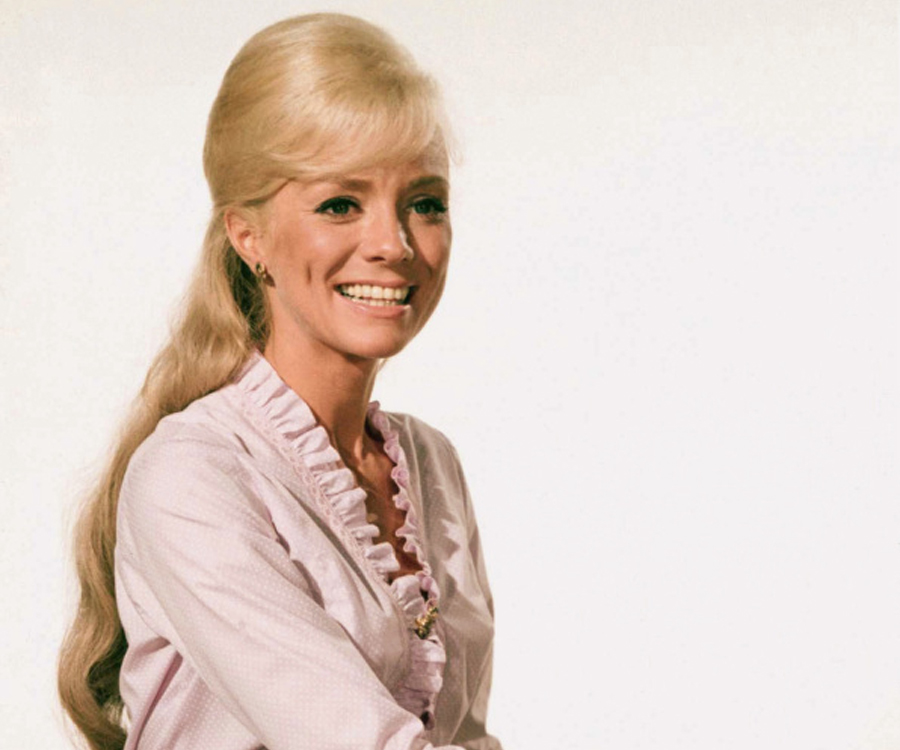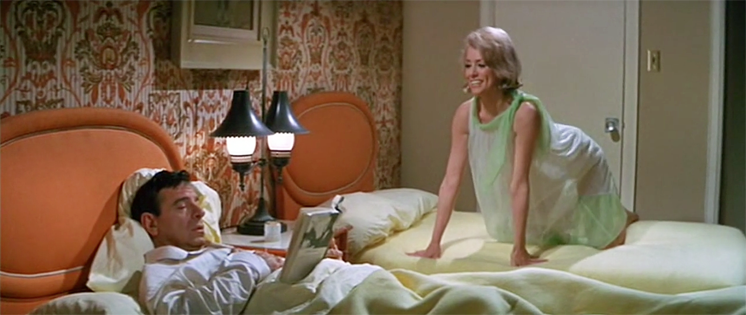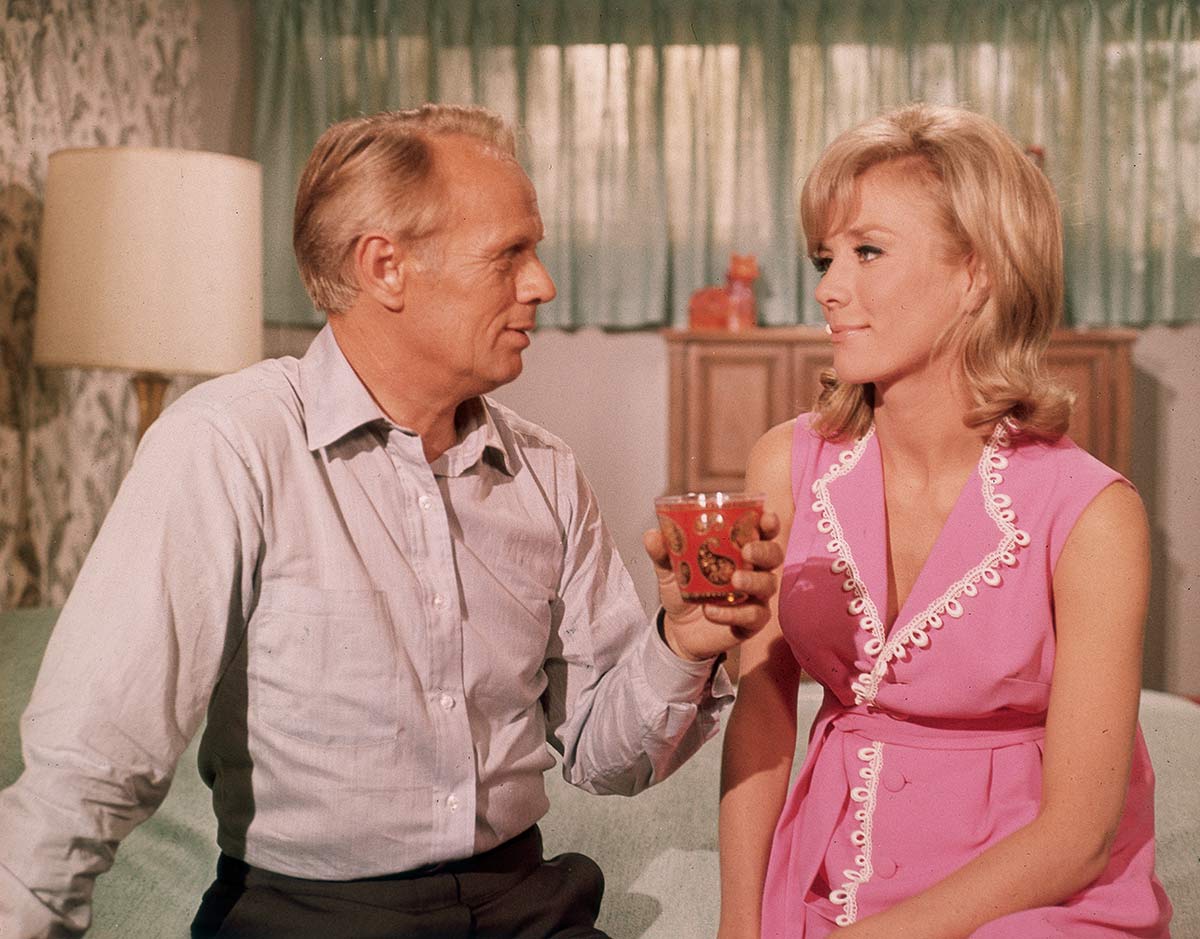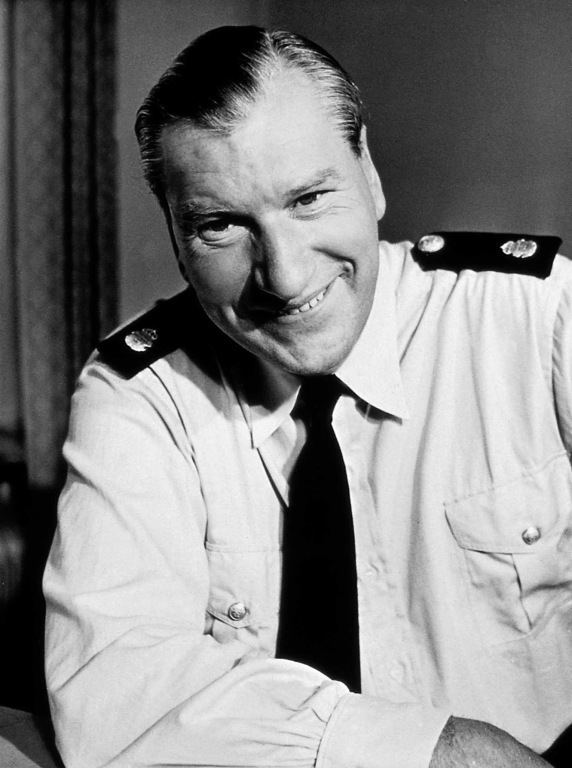Inger Stevens should have been 85.
Oct 18, 2019 8:25:24 GMT
pimpinainteasy, petrolino, and 1 more like this
Post by teleadm on Oct 18, 2019 8:25:24 GMT
Ingrid Stensland was born 85 years ago in Stockholm Sweden. As a child she was often ill. When she was nine, her mother abandoned the family and her father moved to the United States, leaving Inger and her sister in the custody of the family maid. She would later win a Golden Globe for her leading role in the TV-series The Farmer's Daughter in the 1960s. Her life would end in tragedy, in what was ruled as a suicide in 1970.

Over time, a curious fascination, and perhaps even a morbid interest, has developed over Ms. Stevens and her life. What exactly went wrong? A remote, paradoxical young lady with obvious personal problems, she disguised it all with a seemingly positive attitude, an incredibly healthy figure and a megawatt smile that wouldn't quit. Although very little information has been filtered out about Ms. Stevens and her secretive life over the years.
In 1944, the girls moved with their father and his new wife to New York City, where he had found work teaching at Columbia University. At age 13, she and her father moved to Manhattan, Kansas, where she attended Manhattan High School.
At 16, she ran away from home to Kansas City, and worked in burlesque shows. At 18, she left Kansas City to return to New York City, where she worked as a chorus girl and in the Garment District modelling while taking classes at the Actors Studio.
She broke into the business through TV commercials and summer stock, rising in the ingénue ranks as a guest in a number of weekly TV-series.
Often viewed as the beautiful loner or lady of mystery, an innate sadness seemed to permeate many of her roles.

Inger made a big screen debut opposite Bing Crosby (in a rare non-singing, unsympathetic role) in Man on Fire 1957.
Serious problems set in when Inger began falling in love with her co-stars.

Cry Terror! 1958 opposite James Mason and Rod Steiger.

Cecil B. DeMille's last production The Buccaneer 1958, with Claire Bloom, Charles Boyer and Yul Brynner, directed by Anthony Quinn.

The World, the Flesh and the Devil 1959, a science-fiction movie about the last people on earth, opposite Harry Belafonte and Mel Ferrer.
Affairs with Crosby, Mason, Quinn and Belafonte often left her frequently depressed and ultimately despondent.
An almost-fatal New Year's day suicide attempt in 1959 led to an intense period of self-examination and a new resolve.
After her death, Ike Jones, the first African–American to graduate from UCLA's School of Theater, Film, and Television, claimed that he had been secretly married to Stevens since 1961.
Some doubted this due to the lack of a marriage license, the maintaining of separate homes and the filing of tax documents as single people. However, at the time Stevens' estate was being settled, the actress's brother, Carl O. Stensland, confirmed in court that his sister had hidden her marriage to Jones "out of fear for her career". Los Angeles Superior Court Commissioner A. Edward Nichols ruled in Ike Jones's favor and made him administrator of her estate.
A brief Broadway lead in "Roman Candle", an Emmy-nominated role opposite Peter Falk in The Dick Powell Show: Price of Tomatoes 1962, and popular appearances on such TV shows as The Twilight Zone 1960 and Route 66 1960 and 1961, The Alfred Hitchcock Hour 1962 paved the way to a popular series as "Katy Holstrum", the Swedish governess, in The Farmer's Daughter 1963 to 1966. This brisk, change-of-pace comedy role earned her a Golden Globe award and Emmy nomination, and lasted three seasons.

The Farmer's Daughter 1963 to 1966 in 101 episodes, with co-star William Windom.

The New Interns 1964, fellow "new interns" included Michael Callan, Dean Jones, Telly Savalas, George Segal, Stefanie Powers and Barbara Eden.
After The Farmer's Daughter was cancelled she had become a household name, she buit up her momentum once again in films.
In January 1966, she was appointed to the Advisory Board of the UCLA Neuropsychiatric Institute by then California governor Edmund G. "Pat" Brown. She was also named Chairman of the California Council for Retarded Children.

The Borgia Stick 1967 TV-movie publicity pic with co-star Don Murray. A crime-drama shot in New York that was one of the highest rated TV events during the 1966 to 1967 season.

A Guide for the Married Man 1967, with co-star Walter Matthau and directed by Gene Kelly.

A Time for Killing 1967 with co-star Glenn Ford, a western directed by Roger Corman and Phil Karlson.

Firecreek 1968 publicity pic, with co-star Henry Fonda, a western that also starred James Stewart.

Madigan 1968, with co-star Richard Widmark, a police drama thriller directed by Don Siegel.

5 Card Stud 1968 lobby card, with co-star Dean Martin, a western that also starred Robert Mitchum.

Hang 'Em High 1968 publicity pic, with co-stars Clint Eastwood, Pat Hingle, Ed Begley and maybe Arlene Golonka, a spaghetti influenced western directed by Ted Post.

House of Cards 1968 with co-star George Peppard, a crime drama made on locations in France and Italy directed by John Guillermin.

A Dream of Kings 1969 publicity pic with co-star Anthony Quinn, a drama directed by Daniel Mann.
This was Inger's last big screen movie before her death.
On the morning of April 30, 1970, Stevens' sometime roommate and companion, Lola McNally, found her on the kitchen floor of her Hollywood Hills home. According to McNally, when she called Stevens' name, she opened her eyes, lifted her head, and tried to speak, but was unable to make any sound. McNally told police that she had spoken to Stevens the previous night and had seen no sign of trouble. Stevens died in the ambulance on the way to the hospital. On arrival, medics removed a small bandage from her chin that revealed a small amount of fresh blood oozing from a cut which appeared to have been a few hours old. Los Angeles County Coroner Dr. Thomas Noguchi attributed Stevens's death to "acute barbiturate poisoning" that was eventually ruled a suicide.

Run Simon, Run 1970 TV-movie publicity pic with producter Aaron Spelling and co-star Burt Reynolds.
It premiered on 1 December 1970, more than six months after Inger's death.

Thanks for watching!
Thoughts, ideas, oppinions, lists, favorits and/or anything Inger Stevens life and/or movies are very very welcome!

Over time, a curious fascination, and perhaps even a morbid interest, has developed over Ms. Stevens and her life. What exactly went wrong? A remote, paradoxical young lady with obvious personal problems, she disguised it all with a seemingly positive attitude, an incredibly healthy figure and a megawatt smile that wouldn't quit. Although very little information has been filtered out about Ms. Stevens and her secretive life over the years.
In 1944, the girls moved with their father and his new wife to New York City, where he had found work teaching at Columbia University. At age 13, she and her father moved to Manhattan, Kansas, where she attended Manhattan High School.
At 16, she ran away from home to Kansas City, and worked in burlesque shows. At 18, she left Kansas City to return to New York City, where she worked as a chorus girl and in the Garment District modelling while taking classes at the Actors Studio.
She broke into the business through TV commercials and summer stock, rising in the ingénue ranks as a guest in a number of weekly TV-series.
Often viewed as the beautiful loner or lady of mystery, an innate sadness seemed to permeate many of her roles.

Inger made a big screen debut opposite Bing Crosby (in a rare non-singing, unsympathetic role) in Man on Fire 1957.
Serious problems set in when Inger began falling in love with her co-stars.

Cry Terror! 1958 opposite James Mason and Rod Steiger.

Cecil B. DeMille's last production The Buccaneer 1958, with Claire Bloom, Charles Boyer and Yul Brynner, directed by Anthony Quinn.

The World, the Flesh and the Devil 1959, a science-fiction movie about the last people on earth, opposite Harry Belafonte and Mel Ferrer.
Affairs with Crosby, Mason, Quinn and Belafonte often left her frequently depressed and ultimately despondent.
An almost-fatal New Year's day suicide attempt in 1959 led to an intense period of self-examination and a new resolve.
After her death, Ike Jones, the first African–American to graduate from UCLA's School of Theater, Film, and Television, claimed that he had been secretly married to Stevens since 1961.
Some doubted this due to the lack of a marriage license, the maintaining of separate homes and the filing of tax documents as single people. However, at the time Stevens' estate was being settled, the actress's brother, Carl O. Stensland, confirmed in court that his sister had hidden her marriage to Jones "out of fear for her career". Los Angeles Superior Court Commissioner A. Edward Nichols ruled in Ike Jones's favor and made him administrator of her estate.
A brief Broadway lead in "Roman Candle", an Emmy-nominated role opposite Peter Falk in The Dick Powell Show: Price of Tomatoes 1962, and popular appearances on such TV shows as The Twilight Zone 1960 and Route 66 1960 and 1961, The Alfred Hitchcock Hour 1962 paved the way to a popular series as "Katy Holstrum", the Swedish governess, in The Farmer's Daughter 1963 to 1966. This brisk, change-of-pace comedy role earned her a Golden Globe award and Emmy nomination, and lasted three seasons.

The Farmer's Daughter 1963 to 1966 in 101 episodes, with co-star William Windom.

The New Interns 1964, fellow "new interns" included Michael Callan, Dean Jones, Telly Savalas, George Segal, Stefanie Powers and Barbara Eden.
After The Farmer's Daughter was cancelled she had become a household name, she buit up her momentum once again in films.
In January 1966, she was appointed to the Advisory Board of the UCLA Neuropsychiatric Institute by then California governor Edmund G. "Pat" Brown. She was also named Chairman of the California Council for Retarded Children.

The Borgia Stick 1967 TV-movie publicity pic with co-star Don Murray. A crime-drama shot in New York that was one of the highest rated TV events during the 1966 to 1967 season.

A Guide for the Married Man 1967, with co-star Walter Matthau and directed by Gene Kelly.

A Time for Killing 1967 with co-star Glenn Ford, a western directed by Roger Corman and Phil Karlson.

Firecreek 1968 publicity pic, with co-star Henry Fonda, a western that also starred James Stewart.

Madigan 1968, with co-star Richard Widmark, a police drama thriller directed by Don Siegel.

5 Card Stud 1968 lobby card, with co-star Dean Martin, a western that also starred Robert Mitchum.

Hang 'Em High 1968 publicity pic, with co-stars Clint Eastwood, Pat Hingle, Ed Begley and maybe Arlene Golonka, a spaghetti influenced western directed by Ted Post.
House of Cards 1968 with co-star George Peppard, a crime drama made on locations in France and Italy directed by John Guillermin.

A Dream of Kings 1969 publicity pic with co-star Anthony Quinn, a drama directed by Daniel Mann.
This was Inger's last big screen movie before her death.
On the morning of April 30, 1970, Stevens' sometime roommate and companion, Lola McNally, found her on the kitchen floor of her Hollywood Hills home. According to McNally, when she called Stevens' name, she opened her eyes, lifted her head, and tried to speak, but was unable to make any sound. McNally told police that she had spoken to Stevens the previous night and had seen no sign of trouble. Stevens died in the ambulance on the way to the hospital. On arrival, medics removed a small bandage from her chin that revealed a small amount of fresh blood oozing from a cut which appeared to have been a few hours old. Los Angeles County Coroner Dr. Thomas Noguchi attributed Stevens's death to "acute barbiturate poisoning" that was eventually ruled a suicide.

Run Simon, Run 1970 TV-movie publicity pic with producter Aaron Spelling and co-star Burt Reynolds.
It premiered on 1 December 1970, more than six months after Inger's death.

Thanks for watching!
Thoughts, ideas, oppinions, lists, favorits and/or anything Inger Stevens life and/or movies are very very welcome!









